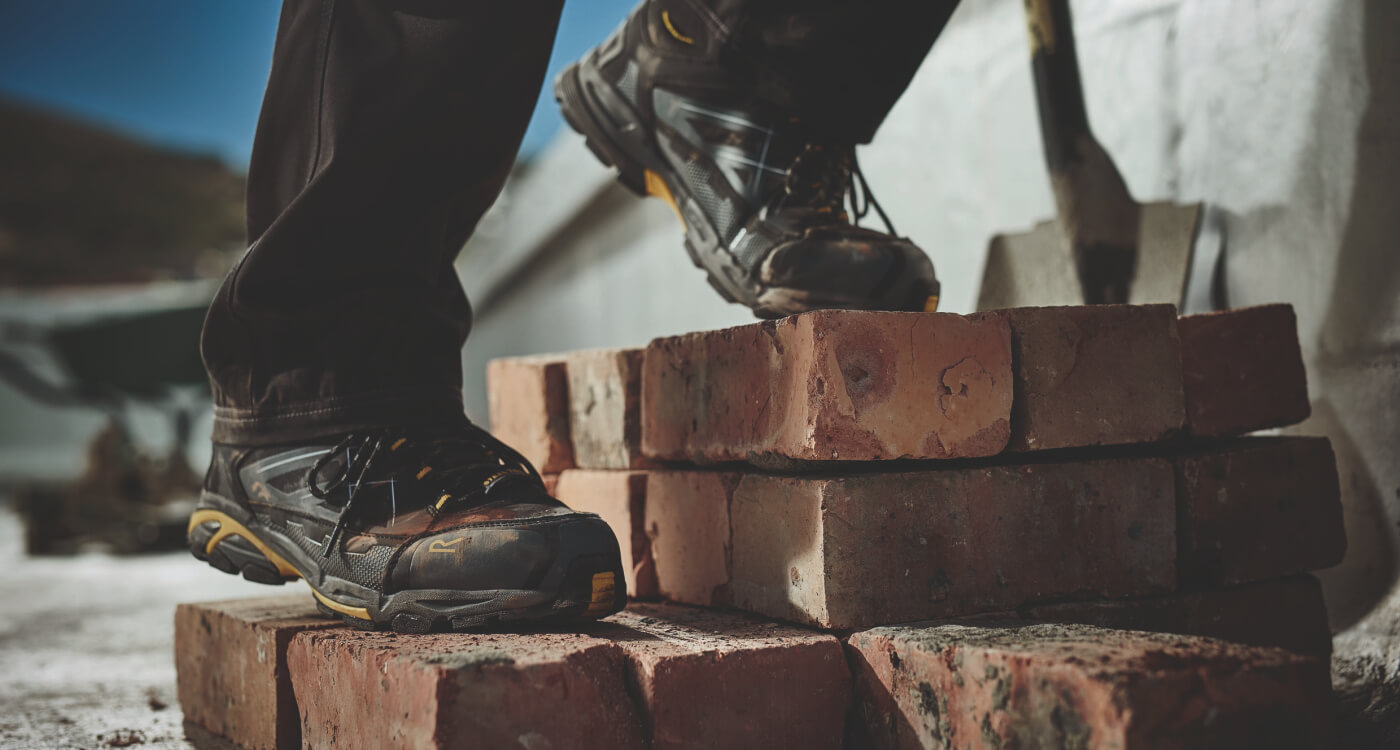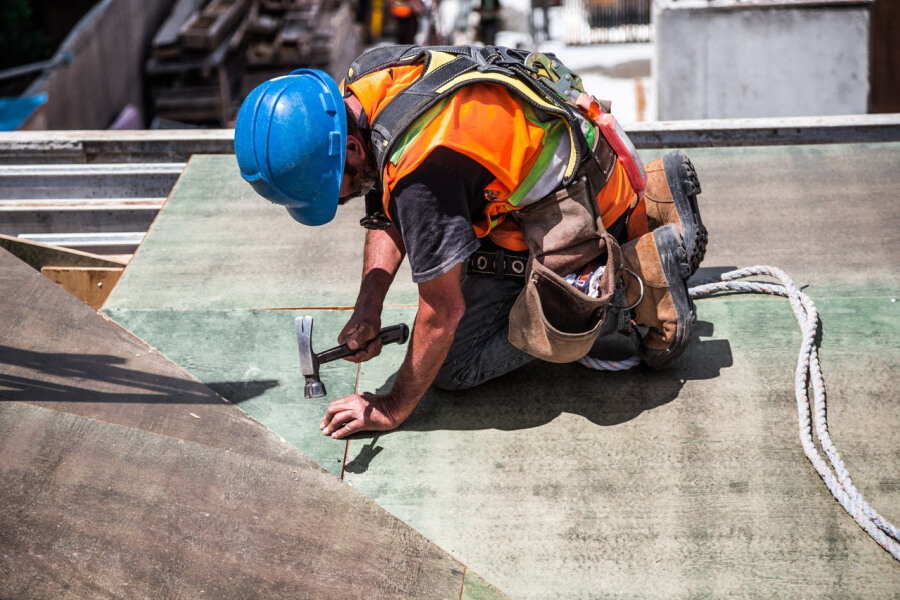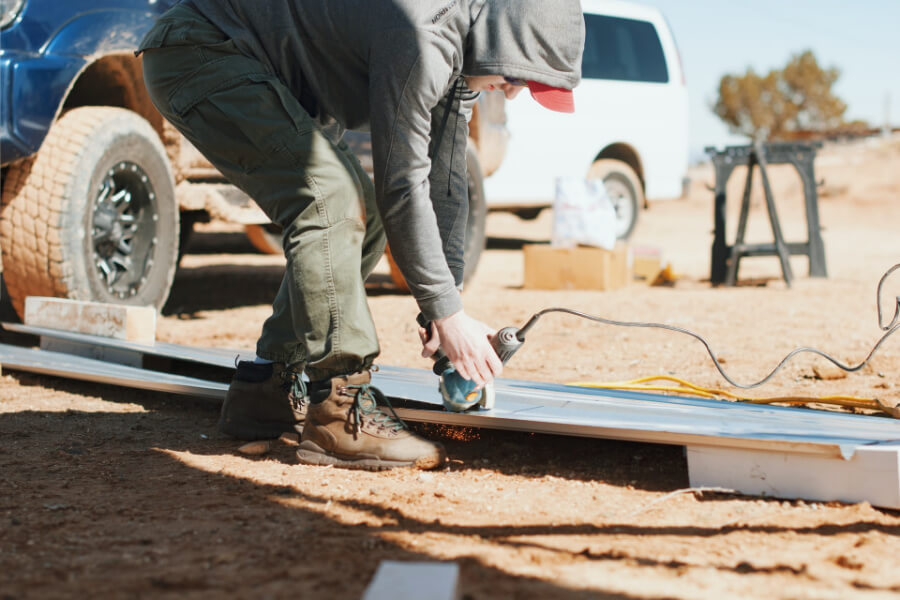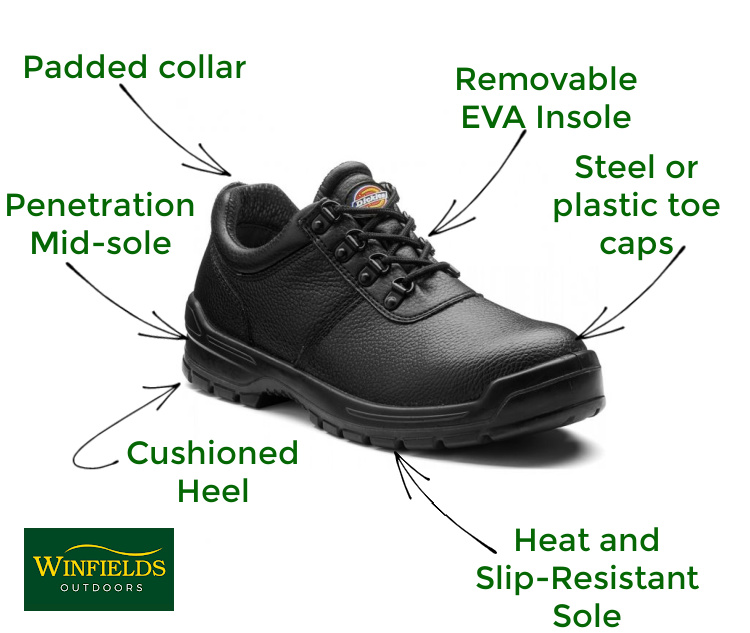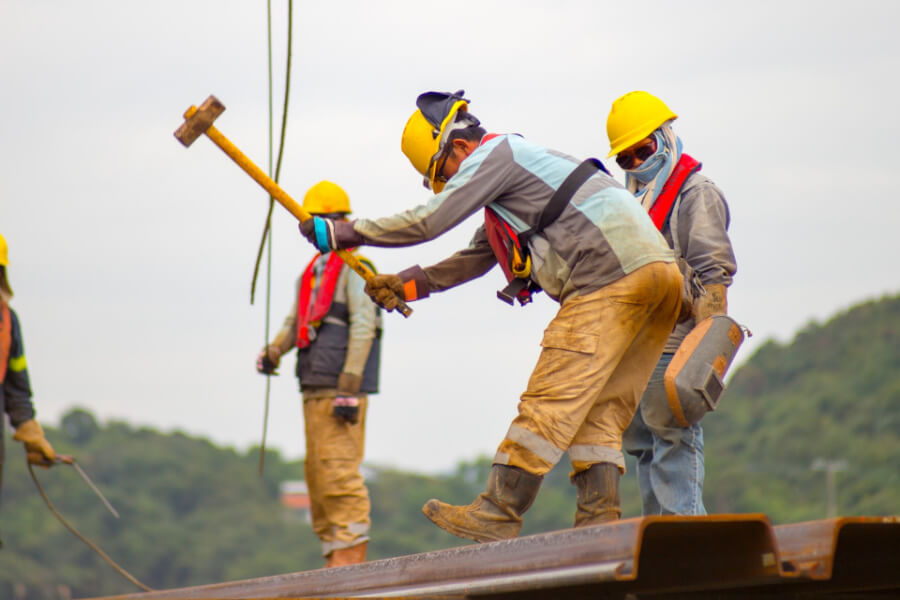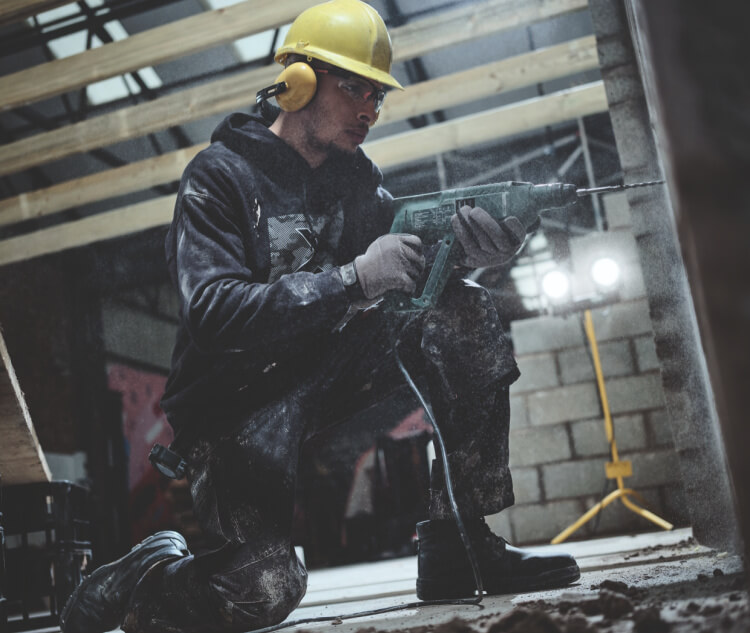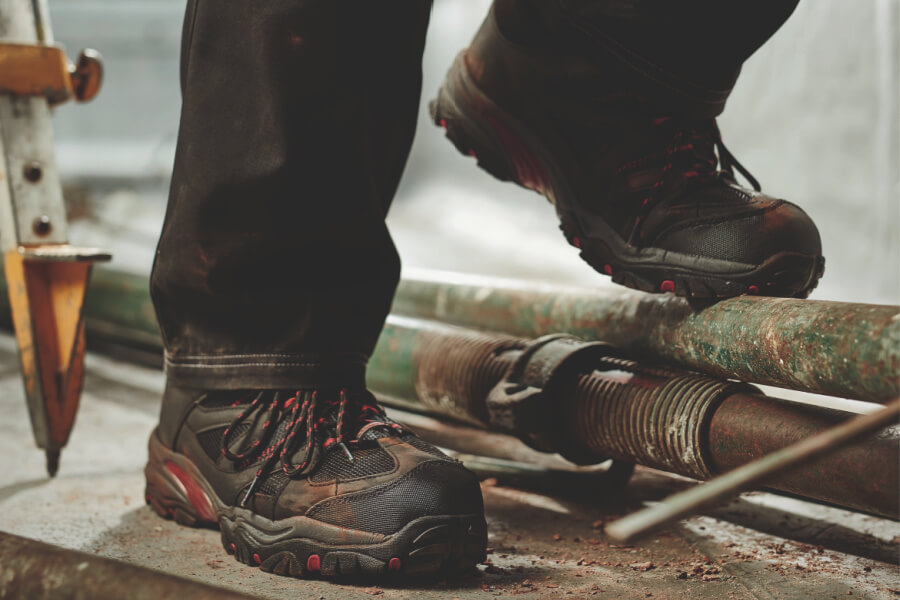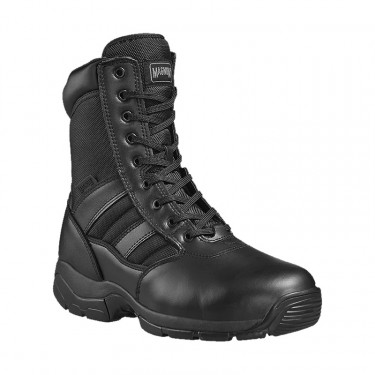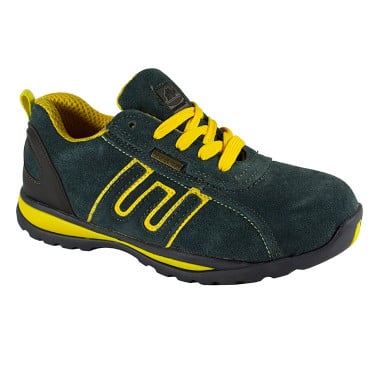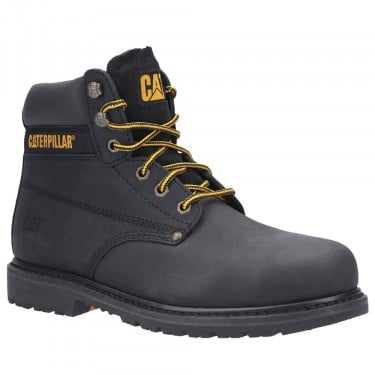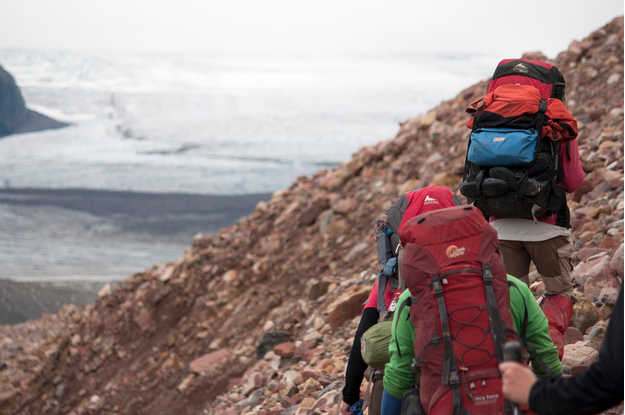When buying safety footwear, you should always start by checking the safety standards and regulations for the specific job that you will be doing so they are fit for purpose.
Once you’ve done this, you need to try on multiple pairs of safety shoes as sizes can vary between each style of safety footwear. And, just like with hiking boots, feet tend to swell throughout the day, so you should try on footwear at the end of the day.
Finally, just like walking around a shop to get a feel for normal shoes, try to recreate working conditions, such as work-like movements. This will be the most realistic movements you will make on a daily basis to pick up on any discomfort. Always wear your work socks when trying on safety footwear to get a better idea of fitting.


